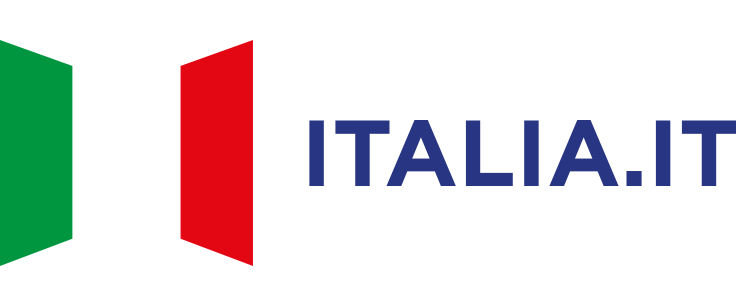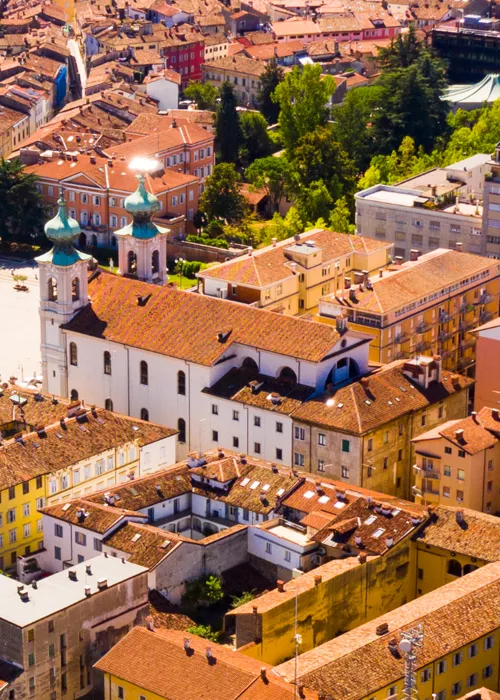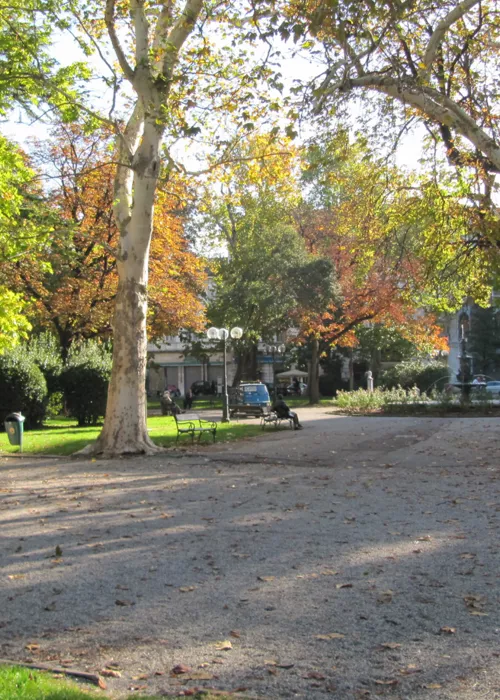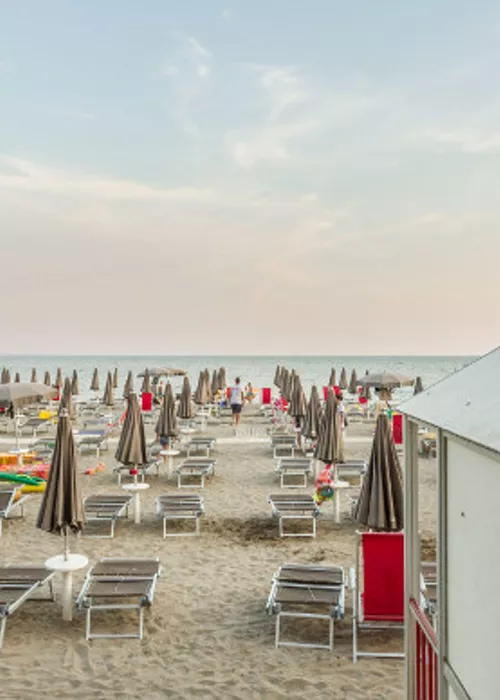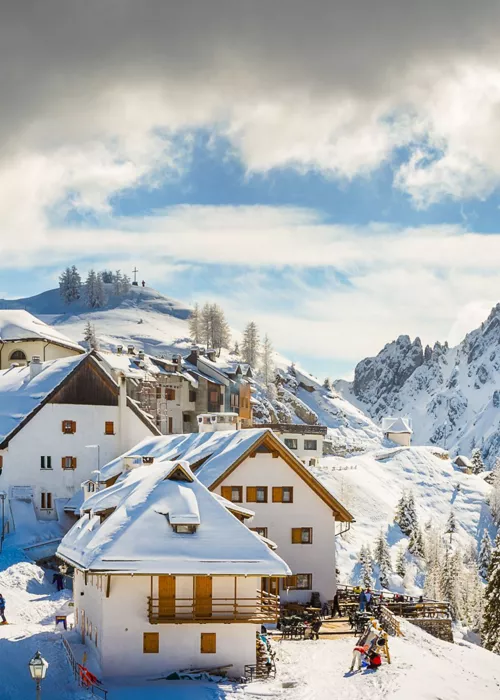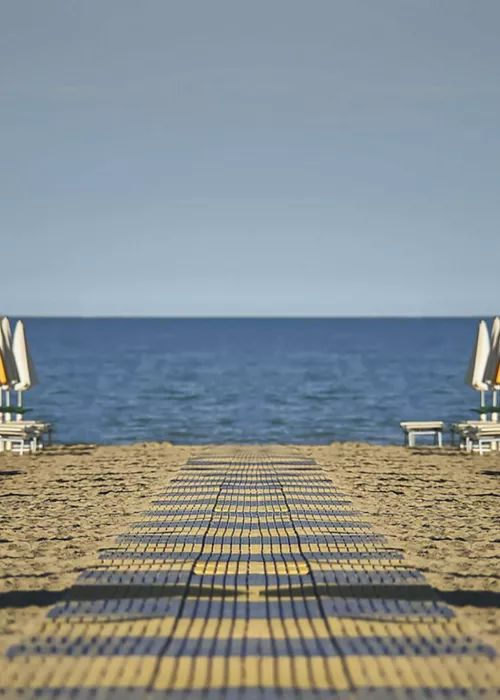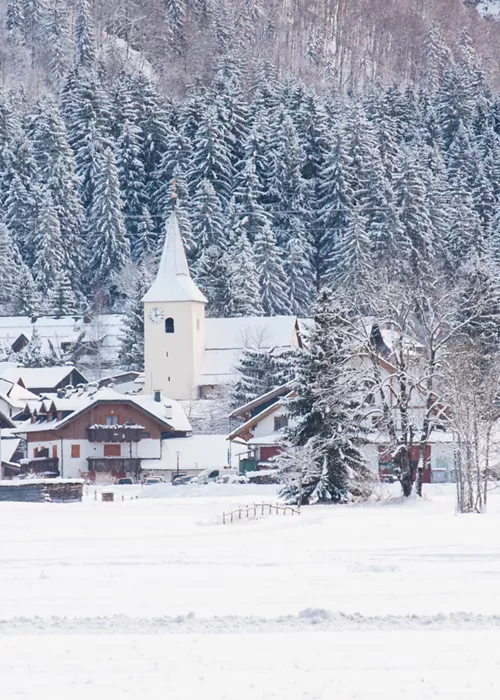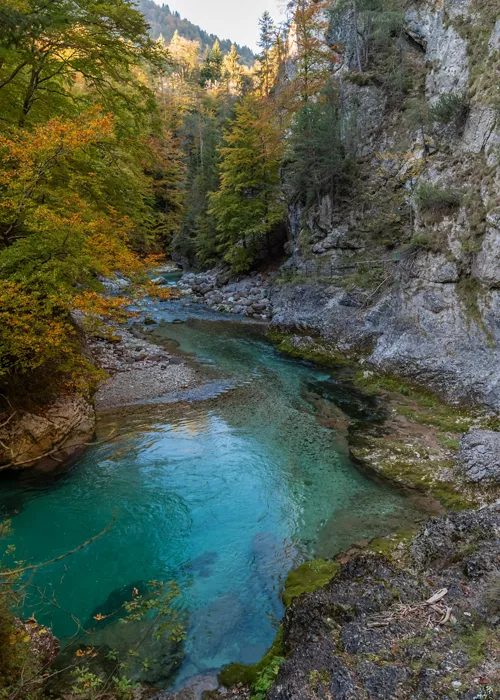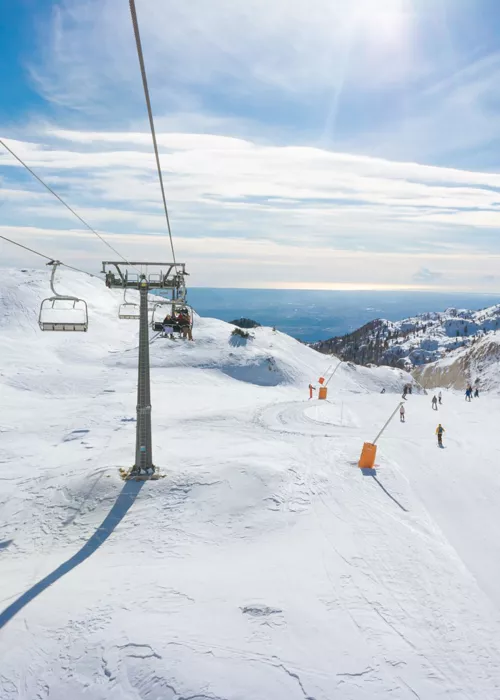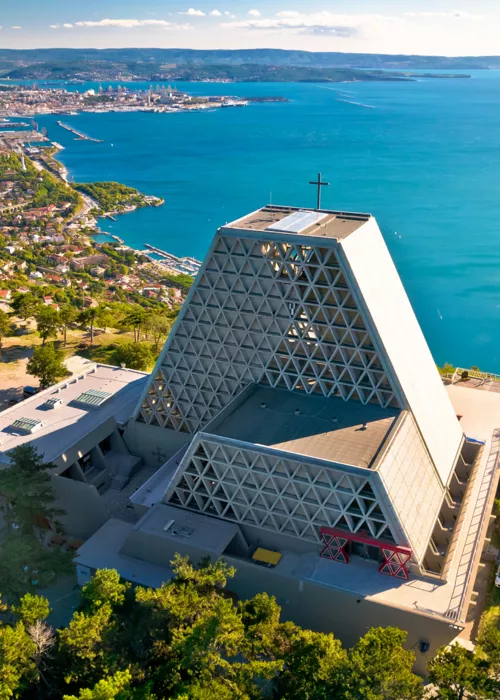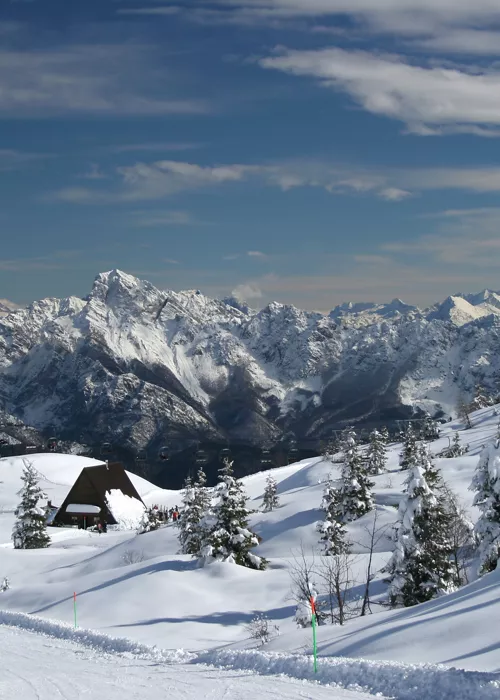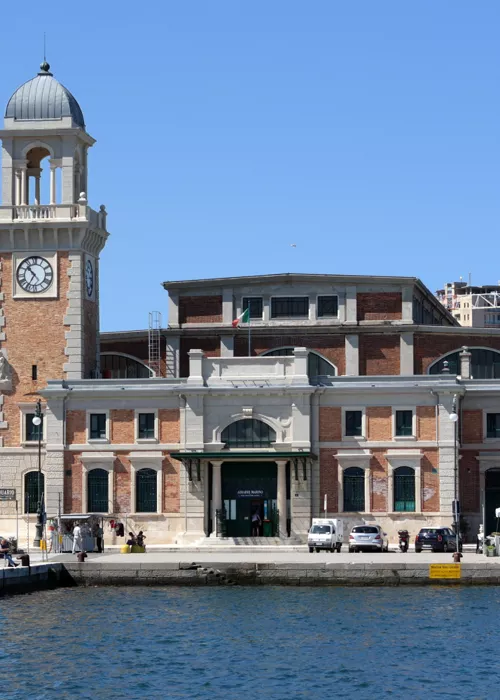Topographies of Memory
6 minutes
Topographies of Memory is a historical, but also emotional journey through the territory between Gorizia and Nova Gorica. It consists of 10 stages (6 in Gorizia and 4 in Nova Gorica), marked by a totem pole with a QR code that allows access to a series of multimedia and audiovisual content. There are interviews, films and photographs collected as part of a project involving the citizens of Gorizia and Nova Gorica who lived in the border area in the first half of the 20th century.
These personal stories interact with official history and highlight the historical specificity of places in the city that are often forgotten or hidden.
Parco della Rimembranza (Memorial Park)

The Parco della Rimembranza was inaugurated in the 1920s on a site that had previously been the town cemetery. In 1929, a neoclassical temple designed by Enrico Del Debbio was erected there, dedicated to the volunteers from Gorizia who, during the First World War (when Gorizia belonged to the Habsburg Empire), chose to enlist in the Italian army, deserting the Austrian one. In the following years, the park was enriched with busts, plaques and monuments in memory of figures and events from the Risorgimento and the Great War, thus becoming a symbolic place of Gorizia's Italian identity.
After the Italian army surrendered to the Allies in 1943, the park became the scene of clashes between Slovenian Domobranci and Italian Fascists: both sides were allied with the Nazis, but at the same time they were in conflict with each other because each claimed possession of the territory of Gorizia. In 1944, the temple, a symbol of Italian identity, was blown up by the Domobranci with the complicity of the Germans. Its ruins became the setting for demonstrations and commemorations by the Italian community of the city.
In 1946, during one of these demonstrations, there was an attack attributed to pro-Yugoslav groups who, at that time, when Gorizia was still under Allied military government, were fighting for the city's annexation to Yugoslavia. Following the attack, there were violent reactions by the Italian population against the Slovenes.
Trgovski Dom

The Trgovski Dom (House of Commerce) building was commissioned by the Slovenian Commercial and Industrial Consortium of Gorizia to architect Max Fabiani (1865–1962) in the early 20th century. At that time, the Slovenian community in Gorizia was very large and influential in city life. Fabiani designed an innovative building in terms of style and internal organisation of space, suitable for hosting economic and cultural institutions, offices, shops and even a small theatre and library. The Trgovski Dom became a centre of reference for the Slovenian population of the city, which is why in 1927 it was set on fire by the Fascists and then transformed into the “Casa del Fascio” (House of the Fascist Party). Between 1945 and 1947, during the period of Allied administration, it became the “Casa del Popolo” (House of the People). It was expropriated again by the Italian state in 1947 and first used as a public office and then assigned to the National League. In recent years, it has been assigned to the Isontina State Library and Slovenian associations, thus finally finding a location that respects the entire city community.
From Via Roma to Piazza della Vittoria

The current Via Roma, which was devoid of buildings until the First World War, took on a significant role during the Fascist period, becoming the centrepiece of the regime's public building plan. A privileged artery for reaching the central square, it was the scene of several parades: in 1938, it hosted the ceremonial parade on the occasion of the Duce's official visit; in May 1945, it was crossed by Yugoslav partisans; in 1946, by pro-Yugoslav processions; in 1947 by participants in ceremonies in honour of Anglo-American soldiers and by those who welcomed the entry of Italian troops in 1947.
From Via Roma, you reach Piazza della Vittoria, the city's main square, the scene of all the most important city events during its troubled 20th century. On 20 September 1938, the Duce held a rally here on his return from Trieste, where two days earlier he had announced the introduction of anti-Jewish racial laws. In 1940, loudspeakers placed in the square announced Gorizia's entry into the war, and during the conflict, the adjacent Bombi gallery provided shelter for many people during the bombings.
After Italy's surrender, the entire north-eastern area of Italy came under the administrative and military control of Nazi Germany. German troops occupied all the main buildings of power and used the square for their parades.
In 1945, during the forty days of Yugoslav administration, the flags of Tito's partisans flew in the square and then, during the two years of Allied military government, those of the British and the United States. During this period, there were also demonstrations by the inhabitants of Gorizia, who, depending on their allegiance, demanded the annexation of Gorizia to Yugoslavia or Italy.
In 1946, the Allied Commission arrived in Gorizia to define the borders: on 27 March, thirty thousand Gorizia residents invaded Piazza Vittoria to support annexation to Italy. It was probably this episode that led the commission to decide to leave Gorizia to Italy.
Casa Rossa / Rožna Dolina border crossing

The Casa Rossa crossing, which later became the main border crossing between Italy and Yugoslavia, was inaccessible to most people until 1955. In fact, only farmers who owned property “on the other side” and therefore had an agricultural pass were allowed to cross.
The division of the city by the new border in 1947 created many difficulties for the people of Gorizia who had chosen to live in Yugoslavia, who found themselves without a city centre and therefore without services and shops. The exasperation of the citizens of Nova Gorica suddenly manifested itself on a Sunday in August 1950, when false news announcing the extraordinary opening of the border led people to cross the Casa Rossa pass en masse without showing their passes. The episode had no serious consequences and allowed people to stock up on some simple everyday items that were now unavailable in the Yugoslavian area, such as brooms. It was this very item that gave its name to the whole day, which is still remembered today as “Broom Sunday”.
Rafut Pass and Kostanjeviška Cesta

The Rafut Pass was a second-class pass, reserved for residents of the border area who had a pass. It is located on a small road that was crossed by the new border in 1947. The border was often defined in an uncompromising manner: in this section, for example, there is still the case of a family whose home was in Italy and whose barn was in Yugoslavia. It was only after the Osimo Treaties of 1975 that it was possible to slightly modify the route, reuniting some properties that had been divided.
Beyond the border, the route continues along Kostanjeviška Cesta (Castagnevizza Road), dominated by the hill of the same name on which stands a monastery, now remembered above all because the last Bourbon kings of France are buried there.
Transalpina Square / Trg Evrope

The Italian name of the square is that of the railway station that was inaugurated in 1906 by Archduke Franz Ferdinand to connect Trieste with Jesenice and Central Europe. In 1947, the square was divided by the new border and for many years was strictly controlled by border guards. The side of the station facing Italy had, next to the red star symbol of socialism, the inscription 'Mi gradimo socializam' (We are building socialism).
With Slovenia's accession to the European Union on 1 May 2004, the dividing line that had separated Gorizia from Nova Gorica for more than 50 years was removed, and the square regained its unified character, straddling two countries. Symbolically, however, the square also retains its Slovenian name, Trg Evrope.
The itinerary continues to Nova Gorica, the new city with a modern design that was intended to become a “socialist showcase” for the West. The first project dates back to 1947 and was inspired by the works of Le Corbusier. The designer Edvard Ravnikar designed a garden city with many green areas and neighbourhoods clearly separated and distinguished according to their function: residential, commercial, and administrative. This initial project was only partially implemented along the two main roads. Subsequently, financial constraints imposed new solutions.
